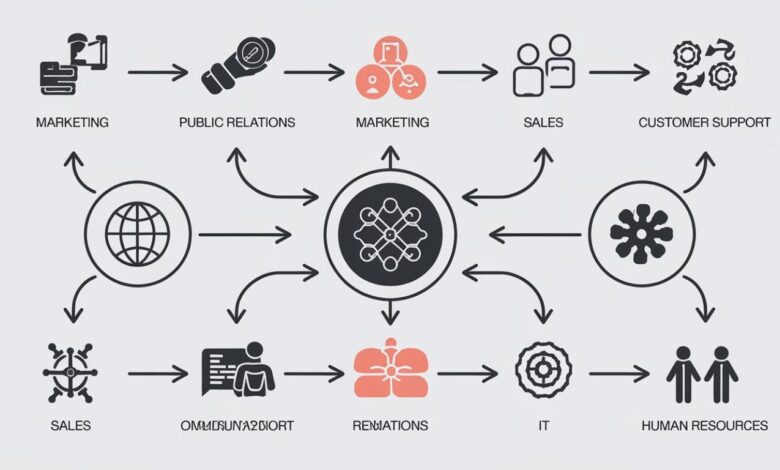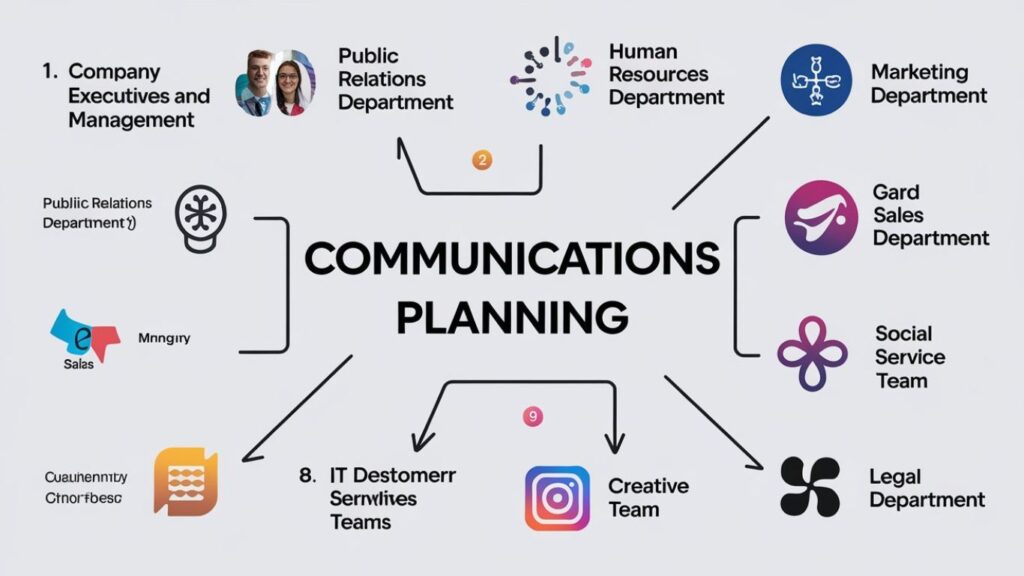The Ultimate Guide: Which Organizations Should Be Involved in Commmunications Planning?

Effective communication is the backbone of any successful organization, campaign, or initiative. Whether it’s a public health message, corporate branding, or government policy announcement, strategic communications planning is essential for delivering the right information to the right audience. However, a crucial question arises: which organizations should be involved in commmunications planning? Involving the right stakeholders ensures clarity, credibility, and widespread reach.
Why Strategic Communications Planning Matters

Before delving into the key players in communications planning, it’s important to understand why this process is so vital. Which organizations should be involved in commmunications planning? This question is crucial because successful communication requires collaboration across multiple sectors. Communications planning helps in:
- Ensuring Message Consistency – Organizations need a unified voice to avoid misinformation.
- Maximizing Audience Reach – Effective communication involves selecting the right channels and partners.
- Enhancing Crisis Management – Planning ensures preparedness for handling emergencies and public relations crises.
- Building Credibility – Messages from recognized organizations carry more weight.
With these goals in mind, let’s explore which organizations should be involved in communications planning to achieve maximum impact.
Key Organizations Involved in Communications Planning

Government Agencies
Government agencies play a fundamental role in communications planning, especially when messages involve public policies, safety, and regulations. Agencies such as the Centers for Disease Control and Prevention (CDC) or the Environmental Protection Agency (EPA) provide essential guidelines for public health and environmental initiatives. Involvement from government bodies ensures compliance with legal frameworks and enhances public trust.
Why Government Agencies Matter:
- They offer regulatory guidance.
- They provide funding for public awareness campaigns.
- Their messages carry credibility and authority.
Non-Governmental Organizations (NGOs)
NGOs are crucial in grassroots communication efforts and advocating for social causes. Organizations like the Red Cross and Greenpeace help bridge the gap between policymakers and the general public.
Contributions of NGOs:
- They provide expertise in social issues such as climate change and public health.
- Their extensive networks enable wide dissemination of information.
- They enhance trust among marginalized or underrepresented communities.
Industry Associations
Trade and industry associations, such as the Chamber of Commerce or the American Medical Association, ensure that communication within a specific sector remains standardized and relevant. Their involvement is essential for businesses to align with industry best practices.
How Industry Associations Contribute:
- They advocate for industry-wide policies and standards.
- They provide professional insights and research-based recommendations.
- They facilitate communication between businesses and government bodies.
Media Outlets
No communication plan is complete without media involvement. Traditional and digital media—such as newspapers, television networks, and online news platforms—act as primary information distributors. Engaging media organizations ensures that messages reach a broad audience effectively.
The Role of Media in Communications Planning:
- They amplify messaging to mass audiences.
- They provide investigative insights and credibility.
- They engage with the public through journalism and social media interactions.
Academic and Research Institutions
Universities, think tanks, and research institutions bring data-driven insights into communication planning. Their studies help in crafting fact-based messages, avoiding misinformation, and ensuring the scientific validity of communication strategies.
How They Add Value:
- They provide empirical research for evidence-based communication.
- They analyze the effectiveness of communication campaigns.
- They offer educational resources to train communication professionals.
Community and Faith-Based Organizations
Local organizations, including churches, mosques, and community groups, are essential for localized communication strategies. They help in reaching diverse demographics and ensuring messages resonate with cultural sensitivities.
Why They Matter:
- They have deep-rooted trust within communities.
- They provide culturally relevant communication strategies.
- They engage in direct outreach efforts that larger organizations may struggle with.
Private Sector Companies
Corporations and businesses play a critical role in corporate communication, public relations, and marketing. From social responsibility campaigns to crisis communication, businesses need to be part of strategic messaging efforts.
Contributions of the Private Sector:
- They bring financial resources and technological expertise.
- They have established marketing and branding channels.
- They leverage advertising and corporate social responsibility initiatives to enhance message dissemination.
Professional Communication Bodies
Organizations like the Public Relations Society of America (PRSA) and the International Association of Business Communicators (IABC) set ethical standards and best practices for communications planning.
Their Role in Communications:
- They provide training and certification for communication professionals.
- They ensure ethical and transparent messaging.
- They create frameworks for crisis communication and media relations.
Challenges in Communications Planning

While strategic communications planning is essential, organizations often face several challenges, such as:
- Misinformation and Fake News – Ensuring credible sources are used is crucial.
- Budget Constraints – Small organizations may lack the funds for effective communication efforts.
- Technological Barriers – Some communities have limited access to digital communication tools.
- Cultural and Language Barriers – Messages must be adapted for different audiences.
FAQs on Communications Planning
1. Why is communications planning important?
Communications planning ensures that messages are clear, accurate, and effective, helping organizations reach their target audience and achieve their goals.
2. Which organizations should be involved in communications planning?
Government agencies, NGOs, media outlets, industry associations, research institutions, private companies, and community organizations should all play a role.
3. How can organizations collaborate effectively in communications planning?
Organizations can collaborate by forming partnerships, sharing data, and aligning messaging strategies to ensure consistency and impact.
4. What challenges do organizations face in communications planning?
Challenges include misinformation, lack of funding, cultural barriers, and technological limitations that may hinder message dissemination.
5. How does technology impact communications planning?
Technology enables real-time communication, enhances message reach, and allows for data-driven decision-making in communication strategies.
Conclusion
A well-structured communications plan requires collaboration between government agencies, NGOs, industry associations, media outlets, academic institutions, community organizations, private companies, and professional communication bodies. Each organization brings unique strengths that contribute to clear, credible, and far-reaching messages. By involving these stakeholders, communication efforts can be more effective, inclusive, and aligned with public interests.
If you are developing a communications strategy, consider partnering with these key organizations to ensure success. Which organizations should be involved in commmunications planning? The answer is: all those that can contribute to building an informed, engaged, and responsive audience.




